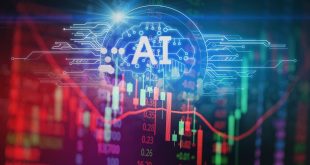The prices of energy, crude and gasoline all increased in 2021 from 2020 according to the latest data released Wednesday by the US Energy Information Agency.
Prices increased because of higher demand and a range of other factors. By the end of 2021, commodities on the energy index traded 59% higher than they did on the first trading day last year on the S&P Goldman Sachs Commodity Index (GSCI), the EIA reports.
GSCI is a commodity index that tracks the performance of global commodities markets. It’s a weighted average that’s updated every year. In 2021, the energy index comprised 54% of the GSCI, with the two crude oil benchmarks, the West Texas Intermediate (WTI) and Brent, accounting for approximately 70% of the energy index. WTI crude oil accounts for the largest share of the overall GSCI of more than 21%.
Most commodity indexes increased by roughly 20%, with only the precious metals index declining in 2021. On a percentage basis last year, the energy index increased by more than double than the industrial metals index did. The only GSCI commodity that increased more than the energy index was coffee.
Prices for petroleum products RBOB and ULSC increased the most in 2021, trading higher by 67% and 64%, respectively, compared to 2020. RBOB is a reformulated grade of gasoline that’s used as the benchmark for gasoline trading; ULSD is ultra-low sulfur diesel that’s used as a benchmark for heating oil trading. Prices for crude oils on the WTI and Brent increased slightly less, by 62% and 55%, respectively, in 2021.
Several factors contributed to the higher energy commodity prices last year, the EIA notes, including weather disruptions such as the February freeze in Texas and Hurricane Ida, which greatly impacted production in the Gulf. Other factors included increased demand for gasoline and diesel and an ongoing demand for crude oil and natural gas that’s greater than the rate of production.
Crude oil prices increased in 2021 with the spot price of Brent crude trading at $50 a barrel at the beginning of the year, increasing to $86 a barrel by late October. The 2021 Brent annual average of $71 a barrel was the highest it had been in the past three years. The WTI’s average was $3 a barrel less than Brent’s in 2021.
According to EIA’s December 2021 Short-Term Energy Outlook estimates, US crude oil production in 2021 decreased by 0.1 million barrels a day from 2020 and by 1.1 million barrels a day from 2019. The EIA also estimated that petroleum inventories decreased by 469 million barrels globally in 2021, “likely the largest annual inventory withdrawal since 2007.”
Rising crude oil prices and increased gasoline demand also contributed to the highest national average price for retail gasoline since 2014. The national average increased to $3.01 a gallon in 2021, with retail gasoline increasing by more than a dollar a gallon over the course of the year.
At the beginning of 2021, the national average retail gasoline price was $2.25 a gallon. It then passed the $3 a gallon mark on May 17 after disruptions to the Colonial Pipeline. Gas prices continued to increase throughout 2021, with the average price peaking at $3.41 a gallon Nov. 8. The average retail price was $3.28 a gallon by the end of the year, over a dollar more than it was at the start of the year, EIA reports.
The lowest average of $2.67 a gallon was in the Gulf Coast states, with Texas reporting some of the lowest gas prices all year. The highest average of $3.70 a gallon was on the West Coast, with California reporting some of the highest gas prices.
One major contributor to high retail gasoline prices last year was high crude oil prices, the EIA points out. The average crude oil price for 2021 was the highest it has been since 2018, due to reduced US refinery capacity, and low gasoline inventories that couldn’t keep up with demand.
The spike in prices in the Rocky Mountains and West Coast resulted from refinery closures in those regions, which led to reduced output of gasoline and lower gasoline inventories, the EIA notes. Less production was compounded by the fact that demand increased due to more visitors traveling to national parks, also putting a strain on already lower gasoline inventories, causing prices for delivery and prices at the pump to go up.

 Noor Trends News, Technical Analysis, Educational Tools and Recommendations
Noor Trends News, Technical Analysis, Educational Tools and Recommendations




